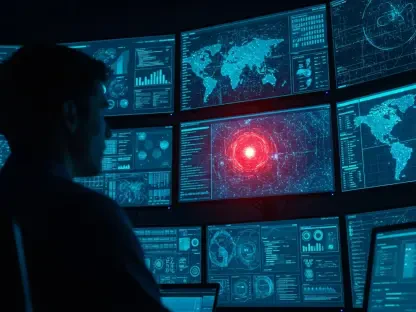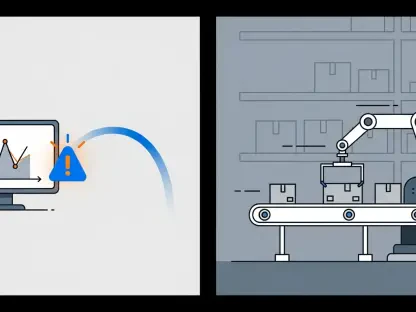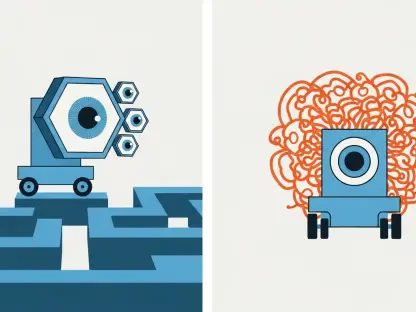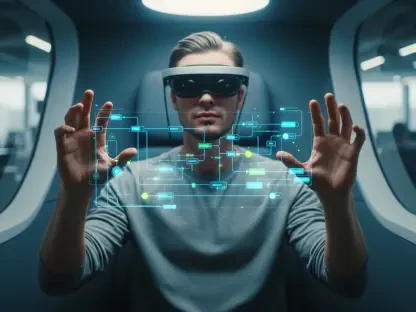Allow me to introduce Laurent Giraid, a distinguished technologist and Artificial Intelligence expert with a deep focus on machine learning and computer vision. Today, we dive into his groundbreaking work at MIT, where he and his team have developed an innovative system for teaching robots to map large, complex environments with unprecedented speed and accuracy. This conversation explores the intricacies of robotic navigation, the challenges of simultaneous localization and mapping (SLAM), and the potential life-saving applications of this technology in scenarios like search-and-rescue missions. Laurent shares insights into how classical computer vision inspired modern solutions and the future of AI-driven robotics.
How did your team at MIT come up with a new approach to help robots map large environments, and what makes it unique?
We wanted to address a critical limitation in robotic navigation—processing vast numbers of images quickly in real-world scenarios. Our system uses AI to break down the mapping process into smaller, manageable submaps, which are then stitched together into a full 3D reconstruction. What makes it stand out is the speed; it can generate accurate maps in seconds, even for complex scenes like crowded corridors. Unlike older methods, it doesn’t rely on pre-calibrated cameras or extensive manual tuning, making it much more practical for real-world use.
Why is the ability to map large areas so crucial for robots, especially in high-stakes situations like disaster response?
In disasters, such as a collapsed mine shaft, every second counts. A robot needs to understand the layout of an unfamiliar, hazardous area while figuring out its own position to navigate effectively. Fast and accurate mapping allows robots to locate trapped individuals or assess dangers without delay. This capability can directly translate to saving lives by enabling quicker, more informed decisions in chaotic environments.
What have been some of the biggest hurdles in simultaneous localization and mapping, or SLAM, for robots over the years?
SLAM has always been tricky because it requires a robot to build a map of an unknown space while simultaneously tracking its own location. Traditional methods often struggle in complex or dynamic settings—think cluttered spaces or poor lighting—where errors pile up quickly. Another issue was the reliance on calibrated cameras, which added complexity and cost, often needing an expert to fine-tune the system. These barriers made it hard to deploy SLAM effectively in unpredictable real-world conditions.
Can you break down how your system uses submaps to handle thousands of images, and why this approach works so well?
Sure, the idea is pretty straightforward but powerful. Instead of trying to process an entire environment at once, our system creates smaller submaps from batches of images captured by the robot’s cameras. These submaps are like puzzle pieces that we align and stitch together to form a complete 3D map. This method lets us handle massive datasets much faster because we’re only processing bite-sized chunks at a time, yet we still achieve a detailed, cohesive picture of the space.
What inspired you to look back at computer vision research from the 1980s and 1990s, and how did those ideas shape your work?
When we first tried stitching submaps, the alignment just wasn’t working as expected, so I dug into older computer vision literature for answers. Back then, researchers focused heavily on geometric principles and optimization techniques to align images. Those classical methods gave us a foundation to address ambiguities in our modern machine-learning models. It was eye-opening to see how these decades-old concepts could solve problems we face today, blending seamlessly with cutting-edge tech.
How did the issue of ambiguity in submaps complicate the mapping process, and what did you do to tackle it?
Ambiguity in submaps often showed up as distortions—like walls appearing bent or stretched in a 3D reconstruction. These errors made it tough to align submaps using simple rotations or translations because the shapes didn’t match up perfectly. We developed a more flexible mathematical approach, inspired by classical geometry, to account for these deformations. By applying consistent transformations across submaps, we could align them accurately, even when the data was messy.
How does your system manage to estimate a robot’s position in real-time while building these detailed 3D maps?
Real-time localization is key to navigation, so our system simultaneously processes camera images to reconstruct the environment and calculate the robot’s position within it. As submaps are created and aligned, the system uses the camera data to track changes in perspective and movement. This dual process ensures the robot always knows where it is, even as it moves through large or complex spaces, without needing extra hardware or pre-set markers.
Looking ahead, what do you foresee for the future of robotic mapping and navigation technologies?
I’m optimistic that we’ll see robotic mapping become even more robust and accessible in the coming years. With advancements in AI and sensor technology, robots will handle increasingly challenging environments—like disaster zones or industrial warehouses—with greater autonomy. I think we’ll also see these systems shrink in size and cost, making them viable for everyday applications, from home assistants to wearable tech. The goal is to make robots smarter and more intuitive, blending seamlessly into our lives while tackling critical tasks.









